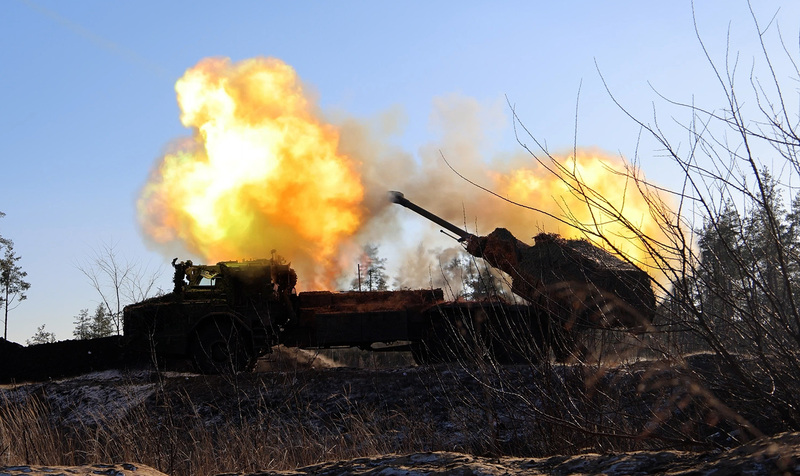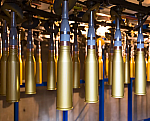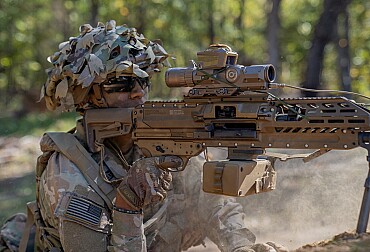Not only the financial intensity of today's conflicts
Today's conflicts are very costly, not only in terms of financial resources but also in terms of overall logistical support, where, for example, in the case of missile attacks, defences can be exhausted in a matter of hours or weeks.
U.S. Secretary of the Navy Carlos Del Toro recently told the Senate Defense Committee during a hearing on additional financial aid packages on the floor of the U.S. House of Representatives that the U.S. Navy has expended nearly $1 billion worth of missiles in connection with recent operations in the Red Sea. These missiles are most likely to be SM-2, SM-6 and SM-3 missiles, which were used in Operation Prosperity Guardian, in which the US Navy protected commercial vessels transiting the Red Sea area from attacks by ballistic missiles, one-way drones and cruise missiles launched by the Ansar Allah terrorist movement in connection with the war in the Gaza Strip.

Although Carlos Del Toro did not disclose exact figures regarding the number or need for resupply of Tomahawk cruise missiles launched from vessels and submarines, it is likely that the resupply of these missiles is part of the US Navy's $1 billion resupply requirement.
Del Toro further pointed out that the situation is critical, and the total cost to the U.S. Navy and Marine Corps for said operations during the recent past is approaching two billion dollars in total.
Consider also that, as Secretary of the U.S. Navy, Del Toro's speech did not take into account the potential impact of recent operations on the U.S. Air Force and U.S. Army. However, given the extensive deployments of both services, it can be assumed that the budgetary implications, particularly the dwindling stockpiles of missiles, will affect these services as well.
Another case in point is the action taken by the Israeli air defence against the recent massive Iranian attack, in which the Iranian Revolutionary Guards fired over 300 ballistic missiles, cruise missiles and one-way attack drones at Israel from Iranian territory. The vast majority of these missiles were shot down by the Israeli air defences and Israeli allies, however, a few missiles landed in the area of Nevatim airbase, but did not cause significant damage (there was no stoppage of air operations from this base). However, the very high success rate of Israeli air defence assets has come at a price. Israeli officials estimate that the cost of the 'interceptors' fired against incoming Iranian missiles and drones was 4-5 billion shekels, which translates to roughly $1-1.3 billion. In contrast, the cost of Iranian missiles and drones fired at Israel was within 10% of the cost of Israeli defences.
This fact points to one of the most significant aspects of today's conflicts - although most targets can be shot down without causing significant damage, such defences through sophisticated means are very expensive and can virtually exhaust the defender's defensive capabilities in a short space of time, as is acutely threatened in Ukraine in these weeks and days. The question is how long and in what numbers the Ukrainian army will receive the newly approved US aid package, which, in addition to 155 mm artillery ammunition, also includes "interceptors" for Patriot systems.
The above-mentioned situations clearly show how important it is to have a sufficient stock of advanced missiles, especially surface-to-air missiles, where a sufficient stock means hundreds to thousands of such missiles. This is also why it is important to consider in Europe whether the overall narrative of preparation for a hypothetical armed conflict with Russia is not undermined by the propagation of a narrative of Russian weakness and the need for relatively small numbers of missiles to destroy, for example, the Crimean bridge or to significantly affect Russian logistics or the ease of responding to large-scale Russian missile strikes against Ukrainian infrastructure.
Today's conflicts suggest that even a hypothetical conflict between Russia and the Alliance will not be a matter of days or weeks, but could instead evolve into a rather protracted attrition conflict in which the demands on stockpiles, particularly of advanced missiles, will be enormous. It would therefore be advisable to consider a significant expansion of the stockpile of these missiles, and this throughout Europe, because it is questionable to what extent we should still rely on the United States at this point, which is slowly but surely preparing for a possible future conflict with China. It is in this potential conflict that the consumption of advanced missiles of all categories would presumably play a significant role, and it is therefore a question of whether the United States would be able to supply both a potential Indo-Pacific battlefield and a potential European battlefield at the same time in this situation.










